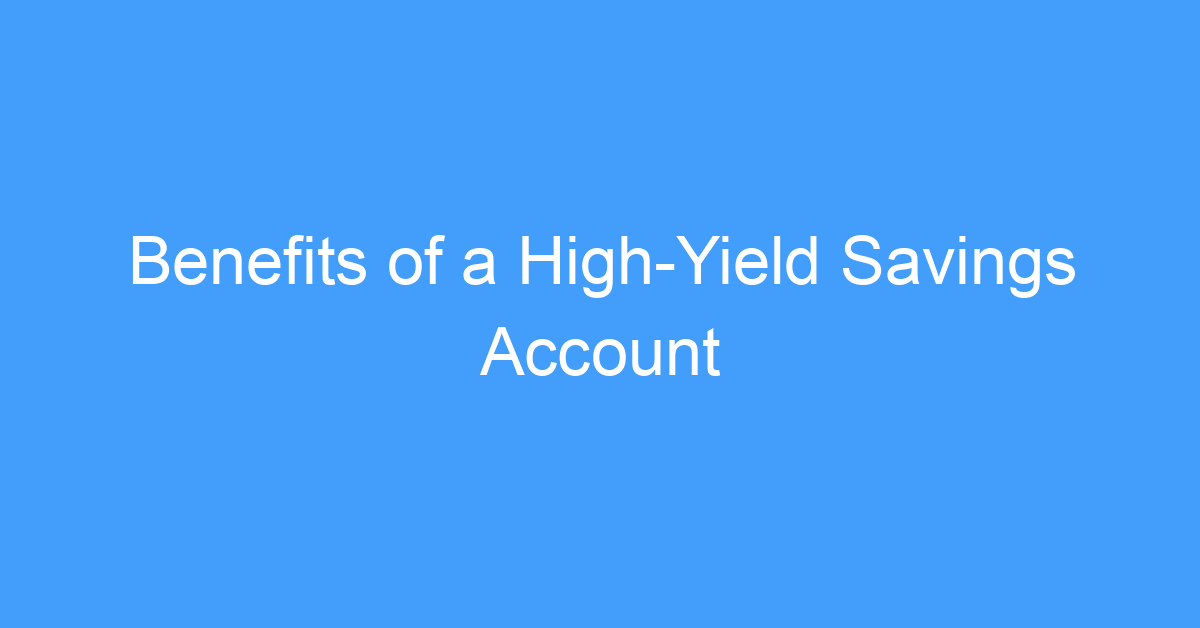High-yield saving accounts are trending and becoming popular among bank customers who want to enjoy high-interest rates and boost their savings. In fact, in a recent survey, 43% of Americans want to save more money, 49% have short-term saving goals, and 51% are focusing on long-term saving.
With so many saving options available in the market, choosing the most profitable one is challenging. Of course, high-yield saving accounts are among the top choices with their flexible fund transfer features and 20 to 25 times higher interest rates than traditional saving accounts.
BeBraveBanking has put together some benefits of high-yield savings accounts to help you decide if a high-yield account is right for you.
Are high yield savings accounts worth it?
Yes. High yield saving account is an essential part of anyone’s financial portfolio if you are looking to plan to meet your financial goals over time or, in general, want to increase wealth.
One benefit of saving money in a high-yield saving account is that you will earn high interest while your money is safe and insured.
Benefits of a high-yield savings account
Emergency fund
An effective way to utilize a high-yield savings account is to use it for emergency savings. Make regular deposits from time to time rather than investing all the money. This way, you can protect your saving from the unpredictable market and still get closer to your financial goals.
Higher Rates of Return
Like traditional savings accounts, high-yield savings accounts offer a simple way to grow your savings. They also allow you to automate monthly contributions and provide an easy way to track your savings over time.
High-yield saving accounts provide features such as scheduled monthly deposits with fixed amounts and saving tracking featire to simply grow your savings over time. In contradictory to traditional saving accounts, high-yield saving accounts provide 20 to 25 times higher annual percentage yield (APY).
Short-term savings for Specific Goals
High-yield saving accounts are perfect in case of saving for short-term goals such as saving for a car or college funds, or vacation. Most banks provide personalized accounts to track the saving progress while giving you higher returns and protecting you from market fluctuations.
Having multiple high-yield savings accounts for different goals can also be used as emergency funds if necessary.
Store your windfalls.
In most cases, it is best to save your windfalls such as stimulus checks, yearly bonuses or even gifts into high-yield saving accounts. You can enjoy the earned interest until you decide what to do with the saved money.
Safe and secure Recession-proof
According to economists, the likelihood of a U.S. recession in 2023 is 64 percent. This will result in a tighter budget for daily expenses and small to medium size businesses with reduced job opportunities. But building your savings by earning a higher rate of return can provide an edge and increase financial security.
Increase saving with lower risks.
Another advantage of high-yield savings accounts is their low risk compared to brokerage accounts. Unlike investments in stocks or bonds, high-yield savings accounts are not directly affected by market performance, making them less risky. Change in interest rate is common, but it is not a weekly or monthly thing. This stability and financial predictability are difficult to find in other forms of investments, providing a level of security for people who are saving.
Disadvantages of high-yield savings accounts
Unable to meet long-term goals.
Although high-yield savings accounts offer higher interest rates than traditional ones, they will fall short of reaching one’s long-term savings goals or be unable to keep up with the inflation rate. For long-term goals such as retirement, investments in stocks or mutual funds may be a more suitable option if you can tolerate the volatility.
Limited transactions. Not suitable for daily banking.
The main purpose of a savings account is to save and store extra amounts for various reasons for the short term. High-yield saving accounts usually have a withdrawal limit of 6 per month. On the other hand, checking accounts are best for day-to-day transactions such as gas stations, grocery shopping, etc.
Tougher requirements to meet
High-yield saving account terms and conditions can be difficult to meet. Sometimes promotional offers are limited and need a minimum amount to be deposited in a certin time period to enjoy the benefits. In general, requirements for high-yield accounts can be tough to meet.
Restricted access to your funds.
Opening a high-yield savings account at a different financial institution from your checking account can make accessing your funds more challenging. Transfers between the two accounts can take a couple of days. A federal regulation limits the number of withdrawals from a savings account to six per month.
Fluctuating interest rate:
The interest rate promised at the time of opening a high-yield saving account is not set forever. Bank can change the rate anytime as per the market changes. However, this is not very common.
Can you lose money in a high-yield savings account?
High-yield savings accounts are insured by the Federal Deposit Insurance Corp (FDIC). The FDIC provides up to $250,000 in protection per account holder in case of bank failure. If the bank is unable to return your deposited money, the FDIC will compensate you for the loss. For e.g., Wells Fargo offers the Platinum Savings account, which is an interest-bearing savings account with FDIC insurance protection up to the maximum limits.
However, because of inflation, your savings can lose it’s purchasing power over the time. For instance, if the annual inflation rate is 6% and your high-yield savings account pays 2% interest, your money has lost 4% of its purchasing power. A higher interest rate means less loss in purchasing power.
